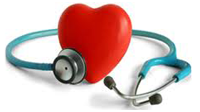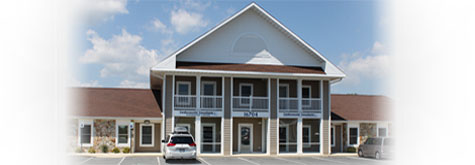Cardiac Catheterization and Angiography
WHAT IS IT?
Cardiac catheterization is a medical procedure used to diagnose and treat certain heart conditions. A long, thin, flexible tube called a catheter is put into a blood vessel in your arm, groin (upper thigh), or neck and threaded to your heart. Through the catheter, doctors can perform diagnostic tests and treatments on your heart.
Basic Facts
Cardiac catheterization is a medical procedure used to diagnose and treat certain heart conditions. A long, thin, flexible tube called a catheter is put into a blood vessel in your arm, groin (upper thigh), or neck and threaded to your heart to do tests or treatments on the heart.
Cardiac catheterization is most often used to evaluate chest pain. It may also be done during a heart attack to identify narrowed or blocked coronary arteries. You also may need this procedure if other tests suggest you have coronary artery disease.
Before having cardiac catheterization, discuss with your doctor how to prepare for the test and any special instructions you need to follow.
It may not be safe to drive right after the procedure. If your doctor says you can go home the same day, you should arrange for a ride home from the hospital.
During cardiac catheterization, you're kept on your back and awake. That way you can follow your doctor's instructions during the procedure. You're given medicine to help you relax.
After the procedure, you will be moved to a special care area, where you will rest for several hours or overnight. During this time, your movement will be limited to avoid bleeding from the site where the catheter was inserted.
A small bruise may develop at the site where the catheter was inserted. That area may feel sore or tender for about a week. You need to let your doctor know if you have a lot of bleeding from that area or signs of infection. You may have to avoid doing certain activities, such as heavy lifting, for a short time after the procedure.
Cardiac catheterization is a common medical procedure that rarely causes serious complications. The risk of complications is higher in people with diabetes and kidney disease, and in older people and women.
Who Needs Cardiac Catheterization?
Cardiac catheterization is used to diagnose and/or treat various heart conditions. Doctors may recommend this procedure for a number of different reasons. The most common reason is to evaluate chest pain. Chest pain can be a symptom of coronary artery disease (CAD), and cardiac catheterization can show whether plaque is narrowing or blocking your heart's arteries.
CAD can be treated during cardiac catheterization with a procedure called angioplasty (AN-jee-oh-plas-tee). During angioplasty, a tiny balloon is put through the catheter and into the blocked artery. When the balloon is inflated, it compresses the plaque that has built up inside the artery. This creates a wider pathway for blood to flow to the heart. Sometimes a stent is placed in the artery during angioplasty. A stent is a small mesh tube that's used to treat narrowed or weakened arteries in the body.
Most people who have heart attacks have partially or completely blocked coronary arteries. Thus, cardiac catheterization may be done on an emergency basis while you're having a heart attack. When used with angioplasty, the procedure allows the doctor to open up blocked arteries and prevent more damage to your heart.
You also may have cardiac catheterization to help your doctor figure out the best treatment for your CAD if you:
- Recently recovered from a heart attack, but are having chest pain
- Had a heart attack that caused major damage to your heart
- Had an EKG (electrocardiogram), stress test, or other test with results that suggested heart disease
You also may need cardiac catheterization if your doctor suspects you have a heart defect or if you're about to have heart surgery. The procedure shows the overall shape of your heart and the four large spaces (heart chambers) inside it. This inside view of the heart will show certain heart defects and help your doctor plan your heart surgery.
Sometimes your doctor may do a cardiac catheterization to see how well the valves at the openings and exits of the heart chambers are working. Valves control the flow of blood in the heart.
To evaluate the valves, your doctor will measure blood flow and oxygen levels in different parts of your heart. Cardiac catheterization also can check how well an artificial heart valve is working or how well your heart is pumping blood.
If your doctor thinks you have a heart infection or tumor, he or she may take samples of your heart muscle through the catheter. With the help of cardiac catheterization, doctors can even do minor heart surgery, such as repair certain heart defects.
What To Expect Before Cardiac Catheterization
Before having a cardiac catheterization, discuss with your doctor:
- How to prepare for the procedure
- Any medicines you're taking, and whether you should stop taking them before the procedure
- Whether you have diabetes, kidney disease, or other conditions that may require taking extra steps during or after the procedure to avoid complications
It may not be safe to drive right after having cardiac catheterization. If your doctor says you can go home the same day as the procedure, you should arrange for a ride home from the hospital.
What To Expect During Cardiac Catheterization
During a cardiac catheterization, you're kept on your back and awake. That way you can follow your doctor's instructions during the procedure. You're given medicine to help you relax, which may make you sleepy.
Your doctor will numb the area on the arm, groin (upper thigh), or neck where the small plastic tube (catheter) will enter your blood vessel. A needle is used to make a small hole in the blood vessel. Through this hole your doctor will put a tapered tube called a sheath.
Next, your doctor will put a thin, flexible wire through the sheath and into your blood vessel. This guide wire is then threaded through your blood vessel to your heart. The wire helps your doctor position the catheter correctly. Your doctor then puts a catheter through the sheath and slides it over the guide wire and into the coronary arteries.
Special x-ray movies are taken of the guide wire and the catheter as they're moved into the heart. The movies help your doctor see where to position the tip of the catheter. When the catheter reaches the right spot, your doctor then uses it to conduct tests or treatments. For example, your doctor may perform angioplasty and stenting.
During the procedure, your doctor may put a special dye in the catheter. This dye will flow through your bloodstream to your heart. Once the dye reaches your heart, it will make the inside of your heart's arteries show up on an x ray called an angiogram. The test is called coronary angiography.
Coronary angiography can show how well blood is being pumped out of the heart's main pumping chambers, which are called ventricles (VEN-trih-kuls). An x ray taken when the dye is in the heart's ventricles is called a ventriculogram. (The procedure is called ventriculography.) When the catheter is inside your heart, your doctor may use it to take blood samples from different parts of the heart or to do minor heart surgery.
To get a more detailed view of a blocked coronary artery, your doctor may do intracoronary ultrasound. For this, your doctor will thread a tiny ultrasound device through the catheter and into the artery. This device gives off ultrasound waves that bounce off the artery wall (and its blockage) to make an image of the inside of the artery.
If the angiogram or intracoronary ultrasound shows blockages or other possible problems in the heart's arteries, your doctor may use angioplasty to open up the blocked arteries.
After your doctor does all of the needed tests or treatments, he or she will pull back the catheter and take it out along with the sheath. The opening left in the blood vessel will then be closed up and bandaged. A small weight may be put on top of the bandage for a few hours to apply more pressure. This will help prevent major bleeding from the site.
What To Expect After Cardiac Catheterization
After a cardiac catheterization, you will be moved to a special care area, where you will rest for several hours or overnight. During that time, your movement will be limited to avoid bleeding from the site where the catheter was inserted. While you recover in this area, nurses will check your heart rate and blood pressure regularly and see whether there is any bleeding from the catheter insertion site.
A small bruise may develop on your arm, groin (upper thigh), or neck at the site where the catheter was inserted. That area may feel sore or tender for about a week. Be sure to let your doctor know if you develop problems such as:
A constant or large amount of bleeding at the insertion site that can't be stopped with a small bandage
Unusual pain, swelling, redness, or other signs of infection at or near the insertion site
Talk to your doctor about whether you should avoid certain activities, such as heavy lifting, for a short time after the procedure.
What Are the Risks of Cardiac Catheterization?
Cardiac catheterization is a common medical procedure that rarely causes serious problems.
But complications can include:
- Bleeding, infection, and pain where the catheter was inserted.
- Damage to blood vessels. This is a very rare complication caused by the catheter scraping or poking a hole in a blood vessel as it's threaded to the heart.
- An allergic reaction to the dye used.
Other less common complications of the procedure include:
- An arrhythmia (irregular heartbeat), which often goes away on its own, but may need treatment if it persists.
- Damage to the kidneys caused by the dye used.
- Blood clots that can trigger strokes, heart attacks, or other serious problems.
- Low blood pressure.
- A buildup of blood or fluid in the sac that surrounds the heart. This fluid can prevent the heart from beating properly.
As with any procedure involving the heart, complications can sometimes, although rarely, be fatal. The risk of complications with cardiac catheterization is higher if you have diabetes or kidney disease, or if you're 75 years old or older. The risk of complications also is greater in women and people having cardiac catheterization on an emergency basis.
If you have any other questions about your Cardiac Catheterization, please call 302-645-1233.




